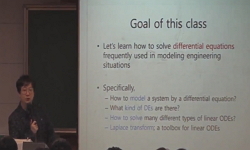The effect of three different Korean Traditional Medicines (KTM) was studied on several functional parameters of adult human cells in culture. The cells were non-transformed strains of normal, skin epidermal cells (keratinocytes) from adult humans. Aq...
http://chineseinput.net/에서 pinyin(병음)방식으로 중국어를 변환할 수 있습니다.
변환된 중국어를 복사하여 사용하시면 됩니다.
- 中文 을 입력하시려면 zhongwen을 입력하시고 space를누르시면됩니다.
- 北京 을 입력하시려면 beijing을 입력하시고 space를 누르시면 됩니다.
The effect of three Korean traditional medicines on the growth rate of cultured human keratinocytes
한글로보기https://www.riss.kr/link?id=A19595257
-
저자
Chung, Seok Hee (Division of Plastic and Reconstructive Surgery, Department of Surgery, University of Michigan Medical Centers) ; Hiroto Terashi (Division of Plastic and Reconstructive Surgery, Department of Surgery, University of Michigan Medical Centers) ; Lenore M. Rhodes (Division of Plastic and Reconstructive Surgery, Department of Surgery, University of Michigan Medical Centers) ; Moon, Namdoo (Biophysics Research Division, The University of Michigan) ; William R. Dunham (Biophysics Research Division, The University of Michigan) ; Cynthia L. Marcelo (Division of Plastic and Reconstructive Surgery, Department of Surgery, University of Michigan Medical Centers)

- 발행기관
- 학술지명
- 권호사항
-
발행연도
2001
-
작성언어
English
- 주제어
-
KDC
510.000
-
자료형태
학술저널
-
수록면
116-124(9쪽)
- 제공처
- 소장기관
-
0
상세조회 -
0
다운로드
부가정보
다국어 초록 (Multilingual Abstract)
The effect of three different Korean Traditional Medicines (KTM) was studied on several functional parameters of adult human cells in culture. The cells were non-transformed strains of normal, skin epidermal cells (keratinocytes) from adult humans. Aqueous extracts of the herbal medicines were tested using two types of cell strains: one type was essential fatty acid deficient (EFAD) cells which grow rapidly in medium that was low in calcium and had no essential fatty acids; the second type was a cell strain grown in medium supplemented with essential fatty acid (EFA-supplemented). These cells had much slower, in vivo skin growth rates, and the fatty acid composition resembled that measured in epidermal biopsy tissue. The KTMs chosen for this study were tae-gang-hual-tang (for treating osteoarthritis), hual-ak-tang (for pain relief) and sip-zeon-tae-bo-tang (for fortifying immune systems). Because high proliferation rates usually correlate with skin inflammation and because many of the chemotactic agents mediating inflammatory response are modified fatty acids, this study focused on cell growth rate and membrane fatty acid composition as signals for the effects of the herbal medicines. By monitoring growth rate, these experiments measured both a stimulatory and a regulatory effect on the growth of keratinocytes. Some toxicity was seen at the highest doses of the KTMs. These effects were modeled mathematically, and the results showed varying effects on growth rate depending on dose and herbal recipe. The fitting parameters were discussed as they relate to biological function. The experimental design was also discussed and alternatives were suggested. ⓒ 2001 Elsevier Science lreland Ltd. All rights reserved.
1 Wright,N.A., "The cell proliferation kinetics of the epidermis" 1983
2 Langdon,R., "Reconstitution of structure and cell function in human skin grafts derived from cryopreserved allogeneic dermis and autologouscultured keratinocytes" 1988
3 Falanga,V., "Rapid healing of venous ulcers and lack of clinical rejection with an allogeneic cultured human skin equivalent" 1998
4 Lowry, "Protein measurement with the Folin phenol reagent" 1951
5 Rhodes,L.M., "Nornialization of essential-fatty-acid-deficient keratinocytes requires palmitic acid" 1994
6 Boyce,S.T., "Normal human epiden-nal keratinocytes" 1985
7 Pittelkow,M.R., "New techniques for the in vitro culture of human skin keratinocytes and perspectives on their use for grafting of patients with extensive burns" 1986
8 Doo,H., "Kyung Hee Herb Formula Index'(Korean)" 1997
9 willie,J.J., "Integrated control of growth and differentiation of normal human prokeratinocytes cultured in serum-free medium: clonal analyses,growth kinetics and cell cycle studies" 1984
10 Cohen,L.V., "In vitro nutrient fatty acid effects on keratin expression and skin graft preparation,National Meeting of the Society for Investigative Dennatology" 1995
1 Wright,N.A., "The cell proliferation kinetics of the epidermis" 1983
2 Langdon,R., "Reconstitution of structure and cell function in human skin grafts derived from cryopreserved allogeneic dermis and autologouscultured keratinocytes" 1988
3 Falanga,V., "Rapid healing of venous ulcers and lack of clinical rejection with an allogeneic cultured human skin equivalent" 1998
4 Lowry, "Protein measurement with the Folin phenol reagent" 1951
5 Rhodes,L.M., "Nornialization of essential-fatty-acid-deficient keratinocytes requires palmitic acid" 1994
6 Boyce,S.T., "Normal human epiden-nal keratinocytes" 1985
7 Pittelkow,M.R., "New techniques for the in vitro culture of human skin keratinocytes and perspectives on their use for grafting of patients with extensive burns" 1986
8 Doo,H., "Kyung Hee Herb Formula Index'(Korean)" 1997
9 willie,J.J., "Integrated control of growth and differentiation of normal human prokeratinocytes cultured in serum-free medium: clonal analyses,growth kinetics and cell cycle studies" 1984
10 Cohen,L.V., "In vitro nutrient fatty acid effects on keratin expression and skin graft preparation,National Meeting of the Society for Investigative Dennatology" 1995
11 Dunham,W.R., "Fatty acid metabolism studies of human epidermal cell cultures" 1993
12 Burton,K., "Determination of DNA concentration with diphenylamine" 1968
13 Ham,R.G., "Cultivation,frozen storage,and clonal growth of non-nal epidermal keratinocytes in serum-free medium" 1985
14 Boyce,S.T., "Calcium-regulated differentiation of nonnal human epidermal keratinocytes in chemically defined clonal culture and serum-free serial cult" 1983
15 marcelo,C.L., "An in vitro model of essential fatty aid deficiency" 1992
16 Hur,J., "'Tong-eui-po-kam'(Korean)" 1989
동일학술지(권/호) 다른 논문
-
- 경희대학교 동서의학연구소
- 최혁재
- 2001
-
- 경희대학교 동서의학연구소
- Uom, E. S.
- 2001
-
Electroacupuncture may relax the sphincter of Oddi in humans
- 경희대학교 동서의학연구소
- Lee, Sung-Koo
- 2001
-
- 경희대학교 동서의학연구소
- Jeong, Hyo-Jin
- 2001




 RISS
RISS








